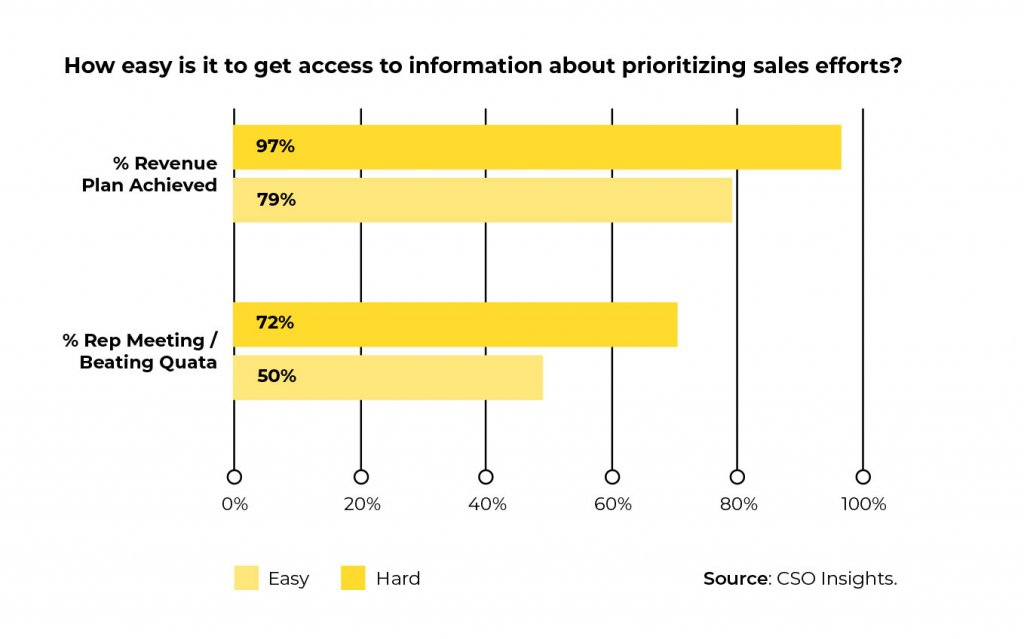What is Lead Scoring?
Lead scoring is a methodology that aims at providing sales with more qualified leads so that your business can use the resources to the maximum potential and get better conversion rates with higher ROI. Marketo offers an effective way to score the leads and prioritize them.
Note that lead scoring is not intended to just target the hot leads and forget about the others. It should not be considered as a stand-alone marketing process without taking into account the inputs from the sales department to identify a qualified lead. A one-size-fits-all approach won’t work in this process.
How does it help?
A great way to ascertain the sales-readiness of your leads, this method can score leads according to the previous interaction and buying stage they are in. Generally, lead scoring systems use demographic and firmographic attributes like job title, company size, and industry along with behavioral parameters like clicks, website visits, and keywords. The primary objective of lead scoring is to determine which leads need to be nurtured and which ones are ready to move to sales.
As it allows you to recognize ready-to-buy prospects or businesses, it will enhance the productivity of your marketing and sales department which will increase the business profitability.
A 10% increase in lead quality can lead to a 40% increase in sales productivity. Pay special attention to the qualified accounts and the right contacts in them by engaging with warm leads. Monitor the metrics and correlate scores to the number of successful conversions so that you can understand the likelihood of closing the deal.
With that said, let’s move on to understanding the basics of lead scoring.
How to start lead scoring?
At the outset, you must take into account two different kinds of information, namely implicit and explicit.
Explicit Scoring
Explicit scoring refers to directly identifiable information or the details the prospect shares with you. These details are obtained through an online form or registration process. By collecting demographic and firmographic details, you can judge whether a prospect falls under the category of ideal customer profile (ICP).
Factors to consider while scoring for the demographic and firmographic factors
i. Job title or role
Determine whether the prospect will be able to resonate with your solution. You should try to understand if they are the decision makers and their level of seniority in the company.
ii. Size of the company
Get to know about the company size and the potential deal size they might be interested in.
iii. Industry
Try to understand if the prospective client’s company will need a product or service you have to offer.
iv. Revenue of the company
This will let you know whether the company has the budget for your solution and the level of solution they can purchase.
v. Location
Figure out the foothold of the company — whether the company is global or domestic. It will give you an insight into the kind of events or training they would be interested in.
Deduction of points for explicit scoring
The leads would have a low score in case they have an entry-level designation or they are not looking for a new product or solution in the near future. Needless to say, someone who unsubscribes will have a low score.
Using data appending services
If you do not have access to all the information needed for demographic scoring, you can append the information to the database. There are data appending services that have high match rates and bring good results to the companies.
Furthermore, using data-appending services will help you in keeping the lead forms and landing pages short. It will capture all the necessary information without hampering the sales cycle. In case your lead forms capture eight fields, it can increase the percentages of lead form conversion by 30% or more by shortening them to five fields.
Implicit Lead Scoring
Implicit scoring, on the other hand, can be carried out by observation or inferences from their online interaction.
You track the lead’s online behavior to gauge their interest in your products or services. You can also infer additional information about the prospect according to the details you have, like IP address location.
If you amalgamate both these scoring systems, you get a clear idea of what value your business brings to the prospect and vice versa.
Getting started with behavioral scoring
Behavioral scoring helps in understanding how ready the prospect is, for buying. Leads showing high interest are the ones who visit the website pages, open emails, and engage with them or respond to offers by clicking through the offer CTAs. If a visitor is going through the product page, he or she is said to have better buying behavior when compared to someone who visits the careers page.
Differentiating between active and passive buying behavior
Understanding the difference between active and passive buying behavior is imperative for accurate lead scoring.
Lead 1: Marie
10 days ago: Downloaded a sample RFP 12
3 days ago: Visited a service page 10
2 days ago: Watched a webinar and demo video 12
Today: Visited the trade show 4
Score: 36
Lead 2: Jane
6 months ago: Downloaded a white paper 3
4 months ago: Registered for a webinar 2
3 months ago: Attended a webinar 8
2 months ago: Opened an email and clicked-through a link 2
2 months ago: Opened an email and visited a service page 10
4 weeks ago: Downloaded an ebook 3
Last week: Visited the website blog 4
Score: 32
The difference between these two leads is that Marie demonstrates active buying behavior according to the actions she has taken.
On the contrary, Jane seems to be showing passive buying behavior even though both these leads would score almost the same score.
Both these leads should be nurtured differently to increase the likelihood of conversion.
It is advisable to create a lead scoring system that helps to highlight significant actions or have a different score for every product line or solution.
Creating scoring models
1. Explicit scoring model
For an explicit scoring model, you can give 10-15 points to a director or VP of a company with more than 500 Million revenue, who has the authority of decision making. If the lead is a manager of a US company with 100 Million to 499 Million revenue, he or she would score 5-9 points. If the lead is an analyst, coordinator, or specialist, 1-4 points would be good. Students and consultants would score negative points.
2. Implicit scoring model
A lead visiting services pages or downloading the rate card within a period of less than three months can be scored at 10-15 points, while someone who downloads buyers guides and data sheets or searches for your company name should be given 5-9 points. Watching a webinar or visiting a web page would fetch 1-4 points while unsubscribing or visiting careers page would result in negative points.
Optimizing the lead scoring model
Once you have devised your lead scoring model, you should test it on the existing pipeline leads and opportunities before launching it. Decide on your ideal prospect and score the leads accordingly to qualify them as sales-ready.
After you get a hang of the process and start getting results, you should constantly optimize the process and scoring system. Stay in the know with the dynamic market and the trends, and keep in touch with your sales and marketing department to review the scores of lost leads and successful conversions. Make sure you are able to correlate the two.
There should be a provision to send the lead back to the marketing for further nurturing if the sales development representative finds that the lead is not sales-ready.
Lead scoring challenges
Inaccurate information is the main challenge with lead scoring methodology. Users might not provide correct answers in the forms, primarily because they would not want any sales calls or emails. Moreover, they could be at an initial stage of buying with changing timeline and budget priorities.
Besides, data-appending apps might have incorrect information which would lead to an ineffective lead scoring model. In case a subscriber has blocked HTML emails, the tracking pixel will fail to load and the email open does not get recorded.
If a lead fills out a form at the workplace and then visits your website on their laptop or personal computer at home, that data will not be included in the lead record.
According to SiriusDecisions, demographic scoring is flawed because it gives special consideration to senior job titles. It does seem to be justified but it does not reflect buying behavior correctly. The CEO of an MNC would hardly have time to look at products or services at departmental level while C-level executives of small companies may have their say in purchase decisions. According to your industry and target audience, you should understand who is more likely to purchase from you and then assign the points.
Moreover, it is not necessary that a bigger company is always better than a smaller one. Evaluate the potential of your prospects and then deduce the scoring criteria.
How to calculate the ROI of lead scoring
Without lead prioritization, sales representatives cannot focus on the right leads at the right time. According to CSO Insights, sales teams who prioritize sales efforts are 18% more likely to meet the revenue goals and 22% more likely to complete or beat their quota.
It is important to determine whether your scoring model yields these results. As mentioned earlier, lead scoring should increase the number of leads converted to customers and enhance the productivity of the sales department, while decreasing the sales cycle times for qualified leads.

Sales cycles are generally measured from the time an opportunity gets added to the CRM or marketing automation system till the purchase is completed. The beginning of any sales cycle is marked when a lead becomes sales-ready and it ends at the purchase. Consider the average number of days that it takes for the process to complete. You must find that the time of sales cycle gets shortened with lead scoring.
However, make sure you have recorded the typical sales cycle time before and after lead scoring. Monitor these trends and optimize your lead scoring model. Measure its continuous effect on your sales cycle.
If sales representatives spend too much time cold calling or following up with bad leads, they will not be able to get ahead of those who are giving demos, making prospect visits or targeting demographic prospects by sharing your company’s value.
Analyze how your sales representatives were spending their team previously and how it has changed after the lead scoring model was introduced.
Measure the number of outbound calls, demos, and prospect visits before and after using lead scoring model. It should reduce the number of touchpoints with sales before purchase and ultimately increase the revenue.
Marketo has shared an easy-to-use table to record the revenue generated.

Wrapping Up
When executed correctly, lead scoring model can not only expedite the conversion process but also streamline the marketing and sales activities.
Have you made lead scoring an important aspect of lead management system? How has it worked for you?
Do let us know in the comments below.






Kevin George
Latest posts by Kevin George (see all)
Ecommerce Emails and Landing Pages – Exploring the Rewarding Combo
Google Analytics 360 and Salesforce Marketing Cloud integration - “A wish come true” for marketers